Istanbul was the last stop on our Turkey Itinerary. With only two days in the city we needed to choose carefully which landmarks we’d visit. Our hotel in Istanbul was in the Sultanahmet District, close to The Blue Mosque, Hagia Sophia and Topkapi Palace. Naturally, they were all high on our Istanbul sightseeing list and maybe a boat trip on The Bosphorus if we had the time. We were excited about the food in Istanbul too.
But there is an unusual attraction in the city that has intrigued me since I first heard about it. Istanbul’s Basilica cistern, and its role in keeping the city supplied with water since the sixth century.
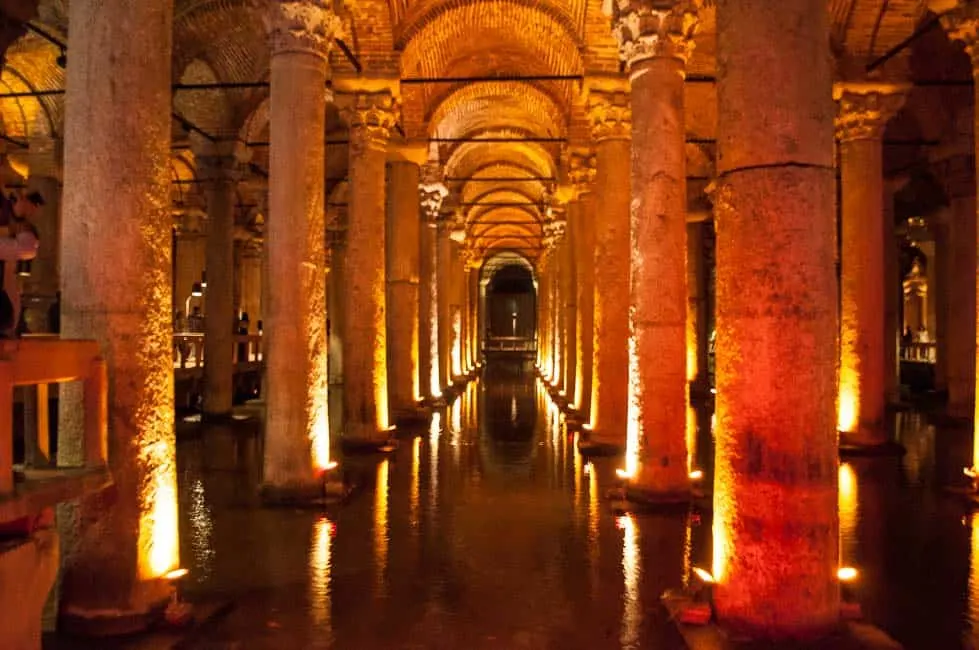 The Basilica cistern, Istanbul
The Basilica cistern, Istanbul
Inside the Basilica cistern, Istanbul
Contents
Descending the 55 steps into the gloom of the underground cistern is deliciously cool after being in Istanbul’s blistering heat. The cistern is probably the coolest spot in the city. Amber lighting illuminates the 336 marble columns rising from the water and their height is elongated by the reflections in the shallows. Haunting music echoes around the cathedral-like chamber and accompanies the steady drip, drip of water from the arching 30ft ceiling. Istanbul’s basillica cistern is eerily fascinating.
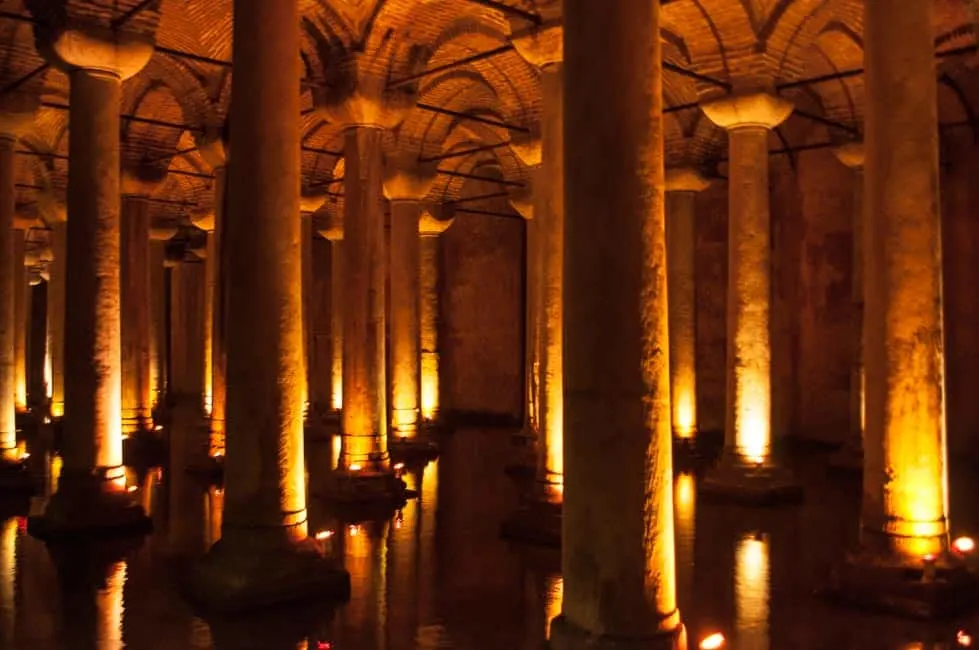 Marble pillars in the Basilica cistern
Marble pillars in the Basilica cistern
What was the Basilica cistern used for?
The cistern or, Yerebatan Sarnıcı (sunken palace) in Turkish, is the largest of several hundred ancient cisterns that lie beneath the streets of Istanbul. This massive underground water container, its walls over 4m thick, was built during the reign of Byzantine Emperor Justinian I in 532. It ensured that the people of, first Byzantium, then Constantinople and ultimately Istanbul were kept supplied with water.
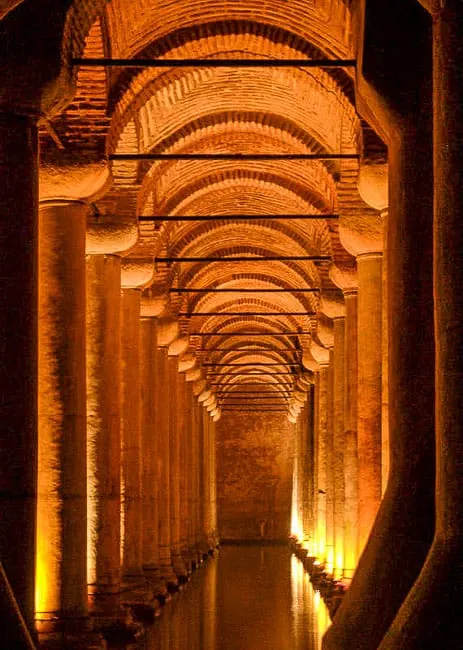 Basilica cistern, Istanbul
Basilica cistern, Istanbul
The underground cistern, which is 143-meters long and 65-meters wide, could hold up to 80,000 cubic meters of water. That’s enough to fill 27 Olympic-sized swimming pools. Most of the water was collected from the Belgrade Forest and other areas outside the city.
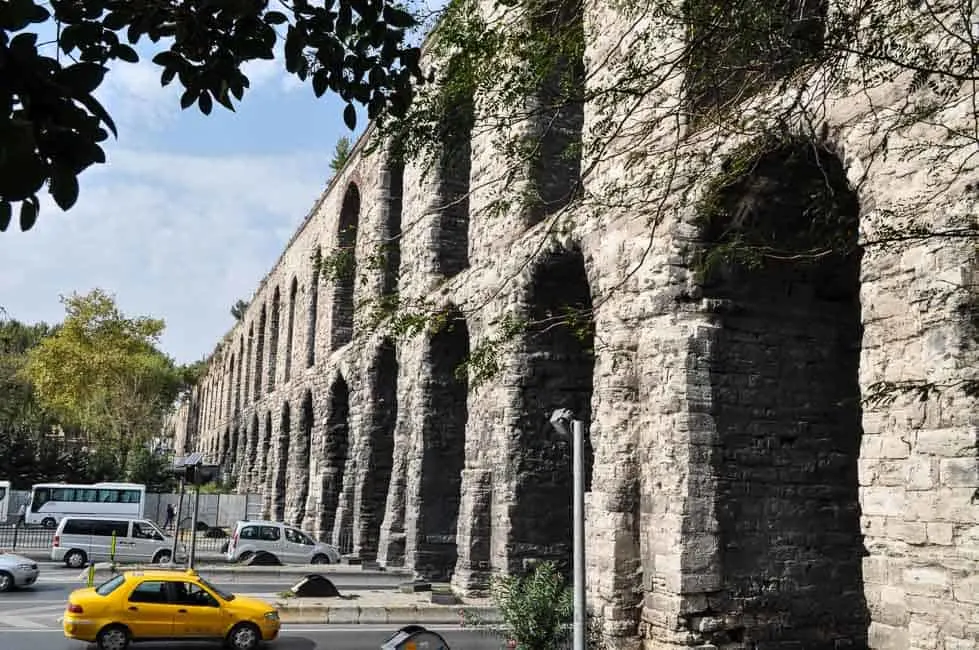 Valens Aquaduct, Istanbul
Valens Aquaduct, Istanbul
Water was transported partly via the 971-meter long Valens Aqueduct, most of which still exists today. The Basilica cistern is just a small part of a complicated system of aqueducts, water towers, canals and fountains which fed the city with water.
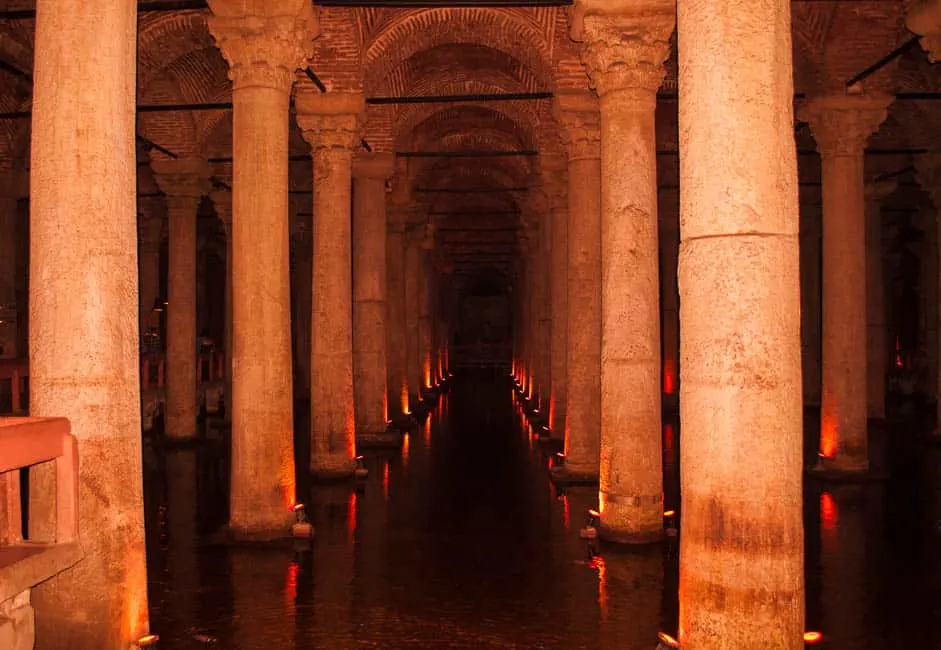 Basilica cistern, Istanbul, Turkey
Basilica cistern, Istanbul, Turkey
Doric, Ionic and Corinithian pillars
In this subterranean world the 9-metre high columns glow in the darkness; a mixture of Doric, Ionic and Corinthian pillars spaced at four-meter intervals, and arranged in 12 rows of 28 columns each. A raised walkway traverses through the towering pillars and we followed it, dodging the droplets falling from above. Carp swim in the gloomy shallows beneath the boardwalk.
Medusa Heads in the Basilica Cistern
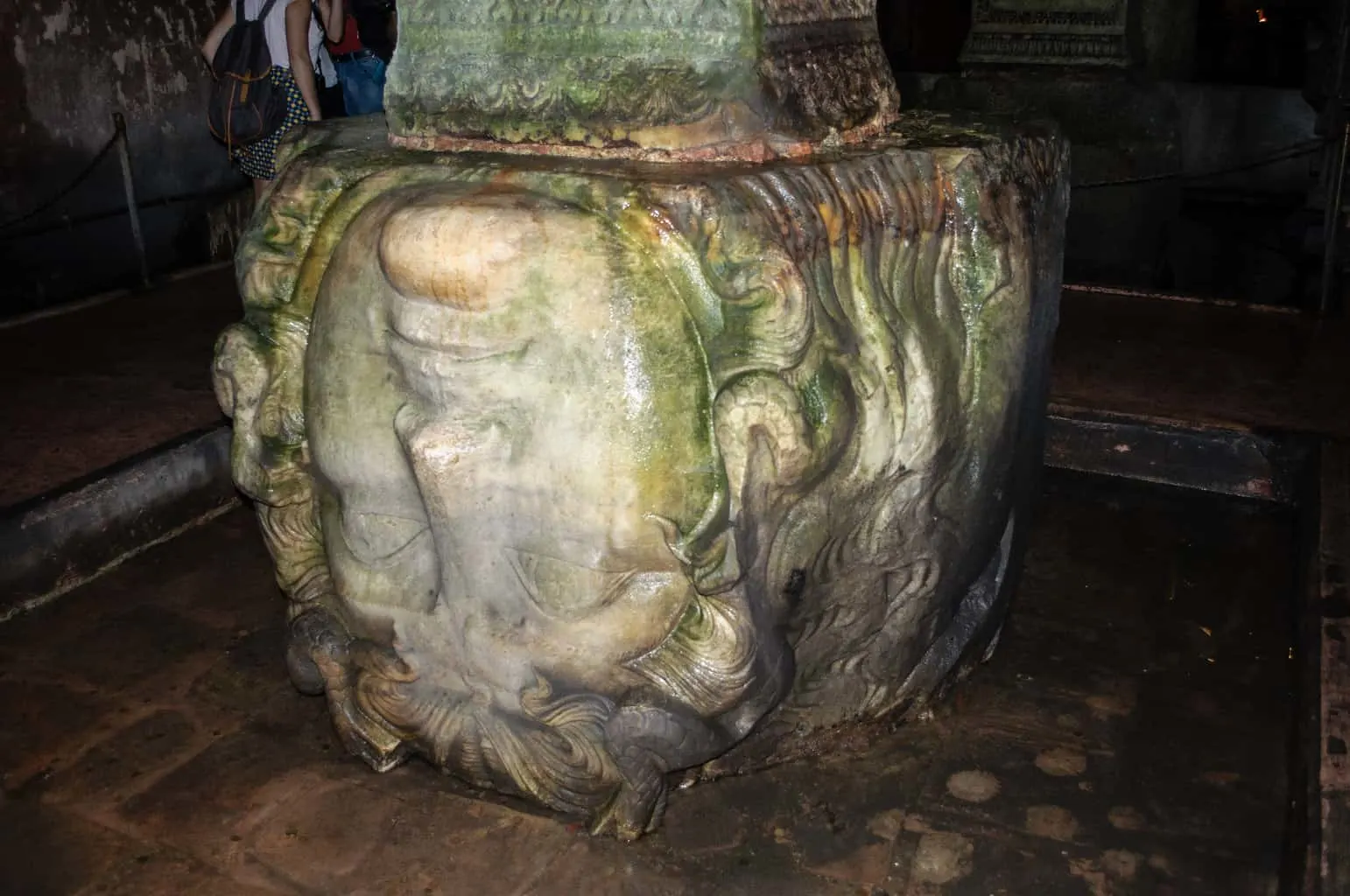 Medusa head at the Basilica cistern, Istanbul
Medusa head at the Basilica cistern, Istanbul
Towards the back of the cistern in the far left-hand corner are two carved stone Medusa heads used as column bases. One is positioned upside down and the other placed on its side. Medusa is one of the three Gorgons, female monsters of the underground world, with the power to turn people to stone.
Some say the carvings are placed on their side to stop their gaze turning onlookers to stone, others that it is so that they are the right height for the columns. I guess the latter is true since the heads were probably reclaimed from another Roman building and not ‘made to measure’. Having said that I did dare to gaze and am still here to tell the tale…
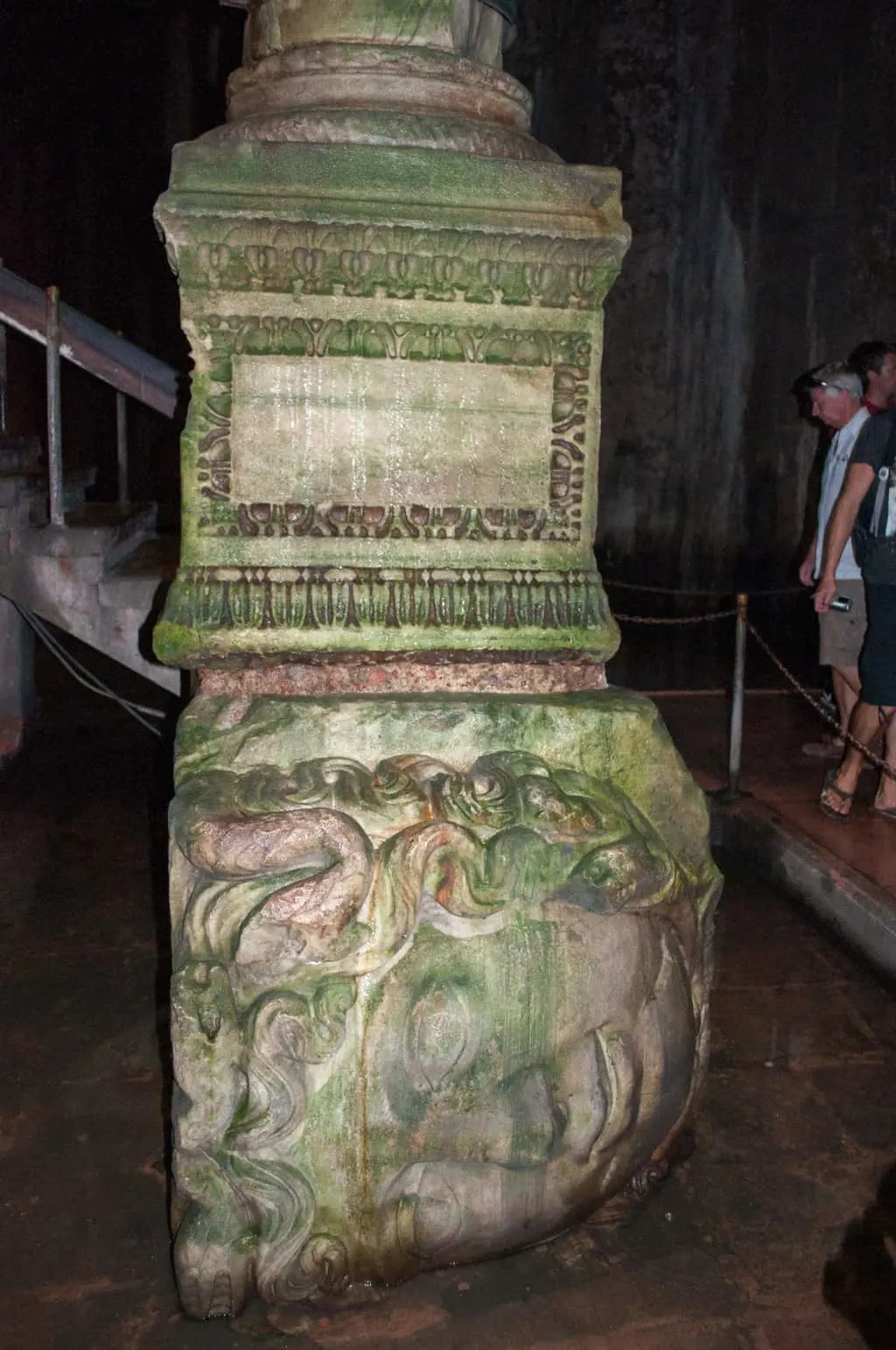 Medusa head at the Basilica cistern, Istanbul
Medusa head at the Basilica cistern, Istanbul
How the Basillica Cistern was discovered
In 1545, while researching Byzantine antiquities in the city, Frenchman, Peter Gyllius was told that people in the locality obtained water by lowering buckets through holes in their basements and sometimes even caught fish this way. Curious to know more he entered via a stone staircase in the back yard of a house and the cistern was re-discovered. After clearing out 50,000 tons of mud, rubbish and allegedy some bodies the Cistern was restored and Istanbul Metropolitan Municipality opened it to the public in 1987.
Where is the Basilica Cistern?
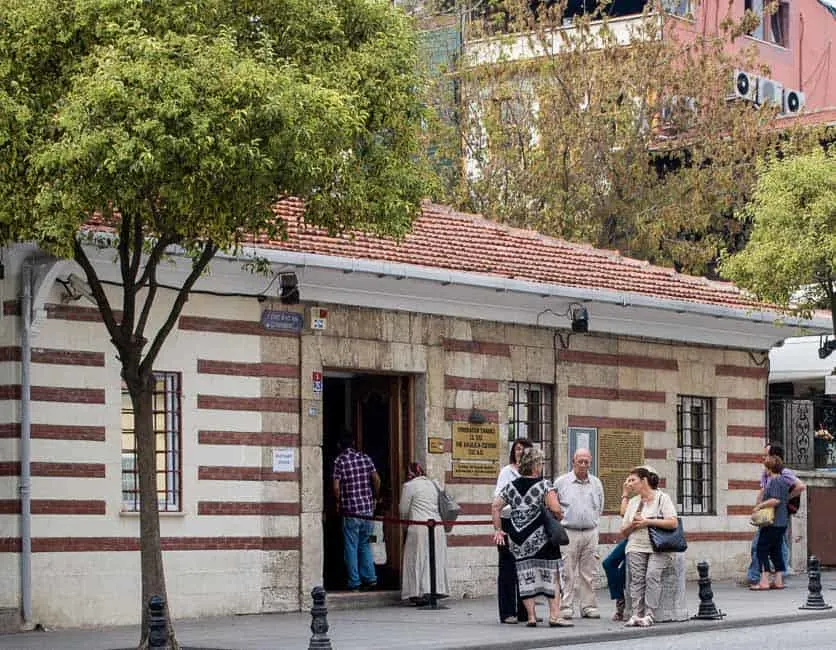
The small entrance is located 150 metres southwest side of Hagia Sophia opposite the yellow building of the Tourist Police in Sultanahmet. Look out for the signs. There is usually a queue here but a visit is worth the wait our you can buy a skip the line guided tour online. We went while we were waiting for prayers to finish at the Blue Mosque. It’s also a good place to head if the sun is getting too much. You’ll probably spend no more than an hour at the cistern.
Basilica Cistern visitor information
Basilica Cistern hours – Open daily from 9:00 – 18:30. Closed until 13.00 on the first day of religious holidays.
Basilica Cistern price or entrance fee – Non-Turkish visitors: 20 TL. Turkish visitors: 15 TL and teachers and students: 5 TL.
Note: The Istanbul Museum Pass is not valid here although the Guided Museum Pass is.
Basilica Cistern (Yerebatan Sarnıcı)
Yerebatan Caddesi 13, Sultanahmet – Istanbul
Tel: +90 212 522 12 59
PIN IT!
This post contains affiliate links. If you purchase through these links, I will earn a small commission at no extra cost to you. Thank you.
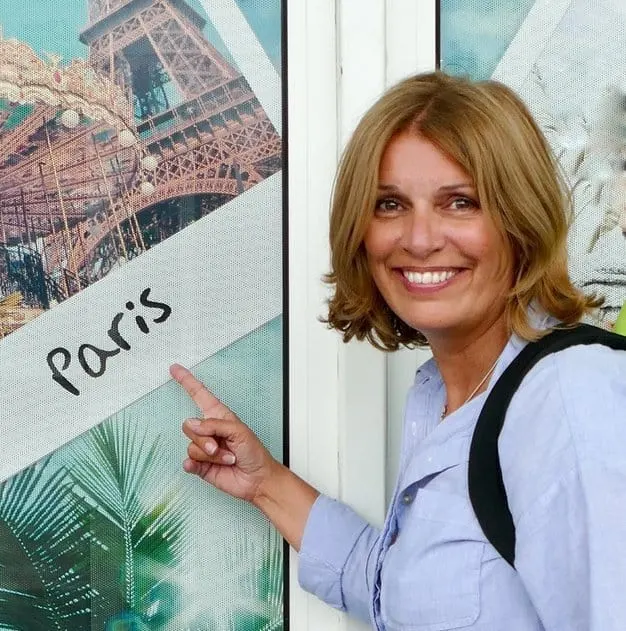
Suzanne Jones is a full-time travel blogger and writer at The Travelbunny website which she started in 2011 during her time as a professional travel planner. This serial traveller enjoys exploring new destinations, culinary encounters and the outdoors. When she’s not indulging her wanderlust or writing about her adventures you’ll most likely find Suzanne, camera in hand, enjoying coastal walks on England’s South Coast.
Suzanne also runs Hello Sussex a website which showcases the best of East & West Sussex. Read more about Suzanne here…

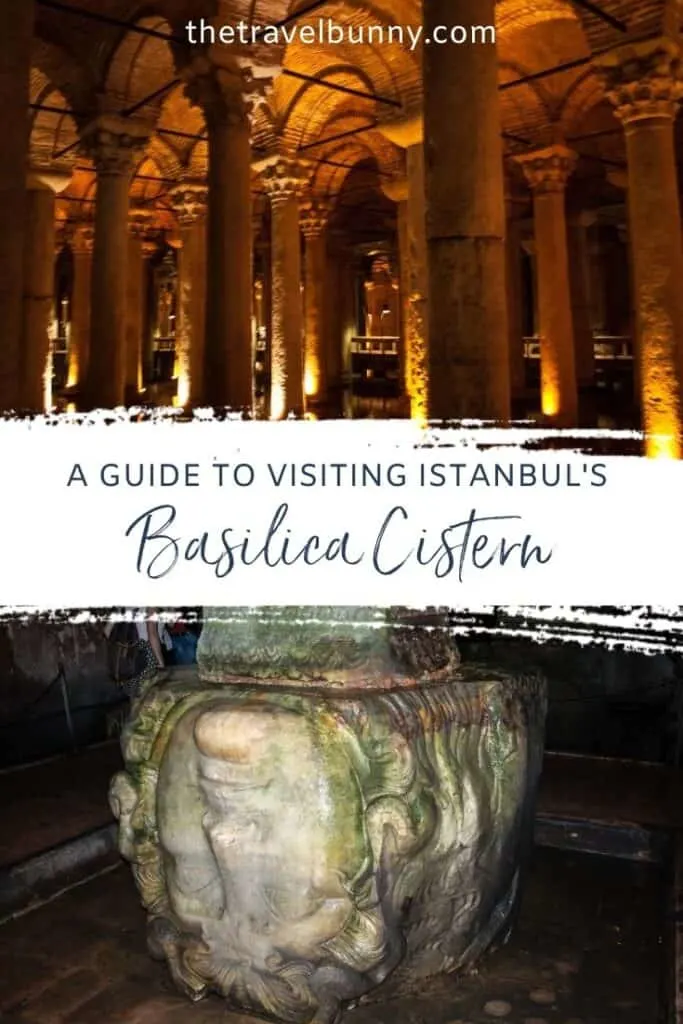
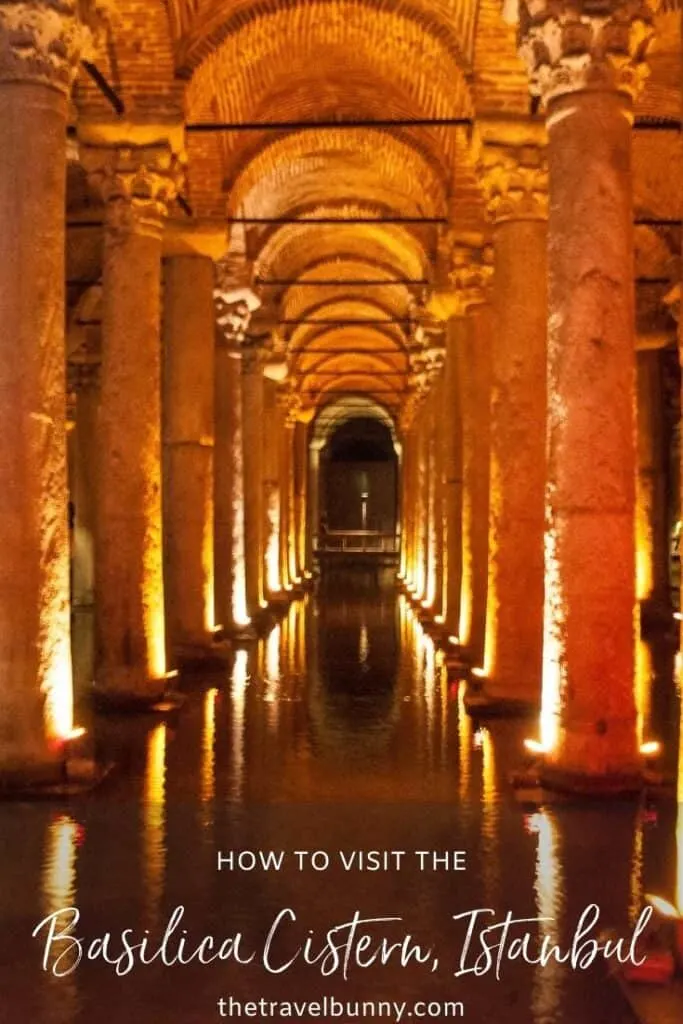
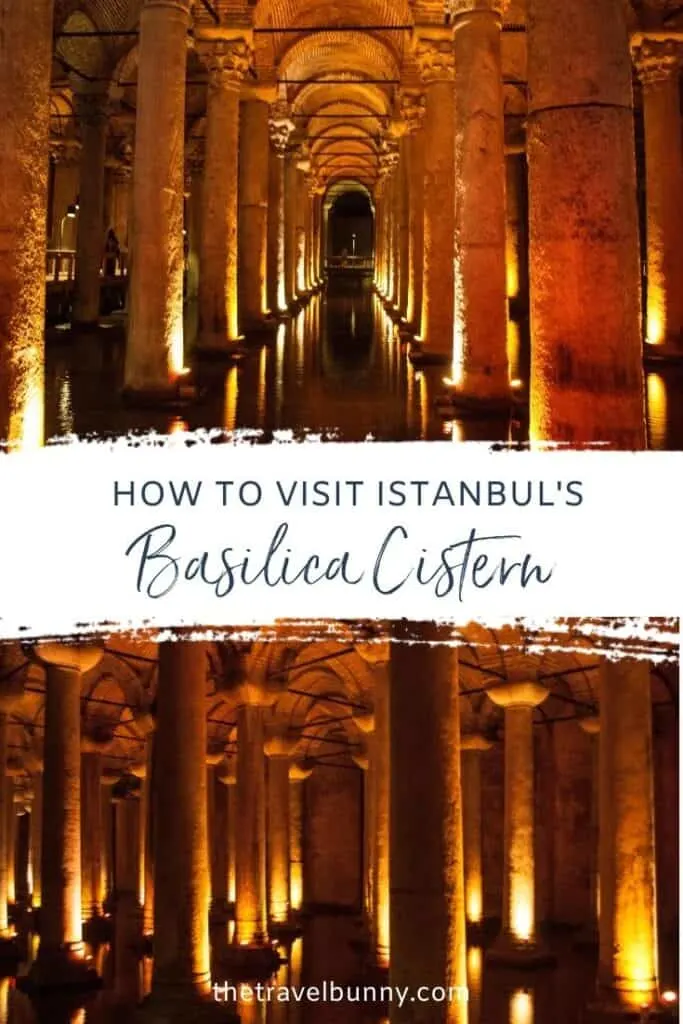
Istanbul: Basilica Cistern | Settlers of Qatar
Monday 26th of May 2014
[…] For a more detailed account of the cistern check out “A Travel Bunny’s” article. […]
Hagia Sophia – Pictures from a Museum | The Travelbunny
Saturday 31st of August 2013
[…] Blue Mosque and Basilica Cistern are close by but save the Hagia Sophia til […]
Istanbul and the Beauty of the Blue Mosque | The Travelbunny
Thursday 15th of August 2013
[…] to Istanbul and Sultan Ahmet Camii was high on my must-see list along with Hagia Sophia Mosque and The Basilica Cistern. Since they’re all in close proximity in the Sulthanamet this is the perfect place to start […]
A Mini Tour of Turkey | the travelbunny
Tuesday 8th of January 2013
[...] flying into Istanbul we took a flight to Kayseri in the centre of the country. We then transferred to Goreme in a [...]
Travelbunny Trips in 2012 | the travelbunny
Thursday 27th of December 2012
[...] We then travelled by bus to Pamukkale, had beach time in Bodrum and finished off our trip in Istanbul. The highlight had to be our dawn hot air balloon trip in Cappadocia – in fact that is one of my [...]